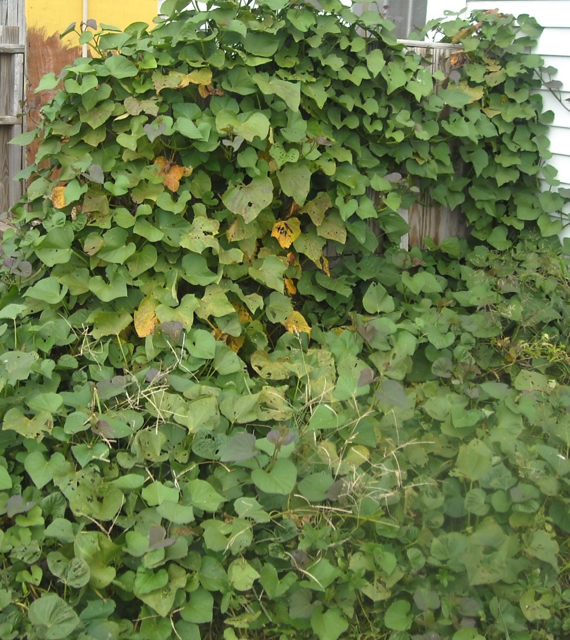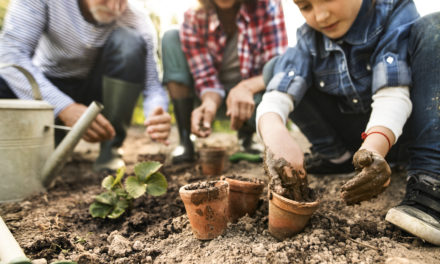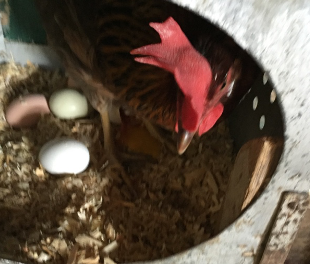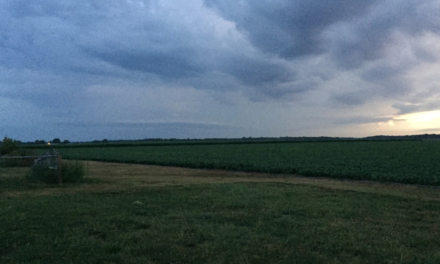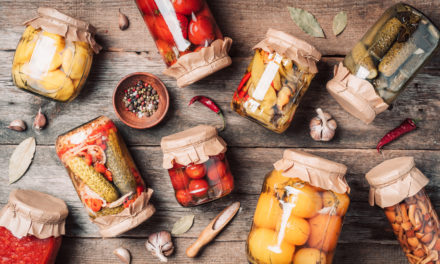Despite our best efforts in soil preparations, some plants don’t appreciate our hard work to create amazingly rich garden soils. Sweet potatoes, for example, like a poor, dry slightly acidic soil with little fertilizer. It is prone to develop scab disease like that which attacks white potatoes if you try to grow it in sweet or alkaline soil. What do you do? Well, this is yet another time when containers come in handy. Sweet potatoes need a growing season of 120 to 150 days so we can plant them in May and still have ample time for harvest.
Sweet potatoes are grown from sprouts or slips which you can start in late winter, or you can pick up packs of transplanted slips for planting in May. You need to wait until the soil is warm as the sprouts may rot in cold ground temperature. A light frost will kill the leaves, so I wait until the soil is thoroughly warm. I like to plant sweet potatoes in bushel baskets and large containers. Make sure your box or container is at least 12 inches deep, and 15 inched wide for a single slip. I save space in my largest containers for some sweet potato slips to cascade over the sides of my pots.
 I can’t explain it, but those slips grown in more confined quarters or poor soil are rounder and meatier than those raised in the rich soil of my open garden, where they tend to become long and spindly. That is another reason to grow in containers.
I can’t explain it, but those slips grown in more confined quarters or poor soil are rounder and meatier than those raised in the rich soil of my open garden, where they tend to become long and spindly. That is another reason to grow in containers.
There is no difference between the timing of ground-planted crops and those grown in pots, so the information given in your favorite gardening books will apply to container gardening sweet potatoes as well.
Sweet potatoes are a member of the morning glory family (Ipomoea) and come to us from Central and South America. No vegetable commonly grown in our gardens can withstand more summer heat, and few require the amount of heat as does the sweet potato. The wrong growing conditions will often result in lush green vines with few potatoes at harvest. You can be assured that the plants were given too much nitrogen if they develop more vines than roots. So please resist the temptation of over fertilizing.
You can’t see the container for the plant, but this is all one sweet potato plant! The yellow leaves were due to not feeding it enough fertilizer. Still, a great harvest as sometimes you can over fertilize them and cause nothing but leaves and have no potatoes at all.
Although the names “sweet potato” and “yam” are often used interchangeably they are two distinct plants with different growth habits and culture. Yams are rarely grown outside of the tropics. They are not as nutritious as sweet potatoes and very starchy. I have eaten yams in Fiji and third world countries, and they are gluey when they are cooked. I prefer a well cured sweet potato.
One mistake I made as a beginner gardener was planting sweet potatoes too late to take advantage of the full growing season. I know I talked about not starting too early, so it’s tricky. Plant too early and the plants languish in the cold, but you still need to get them in the ground as soon as it’s warm enough to have the full 120 to 150 days required to produce decent sized roots.
I love using sweet potatoes in my container gardens as their vines soften the exterior of the container as it flows down the sides. You can use the commercial sweet potato hybrid that produces no fruit but why not just pick up a six-pack of sweet potato slips and have the kids dig for potatoes at the end of the season? Try growing some this season and let me know how they turned out. Hope this was helpful!
Be blessed! Anne May

